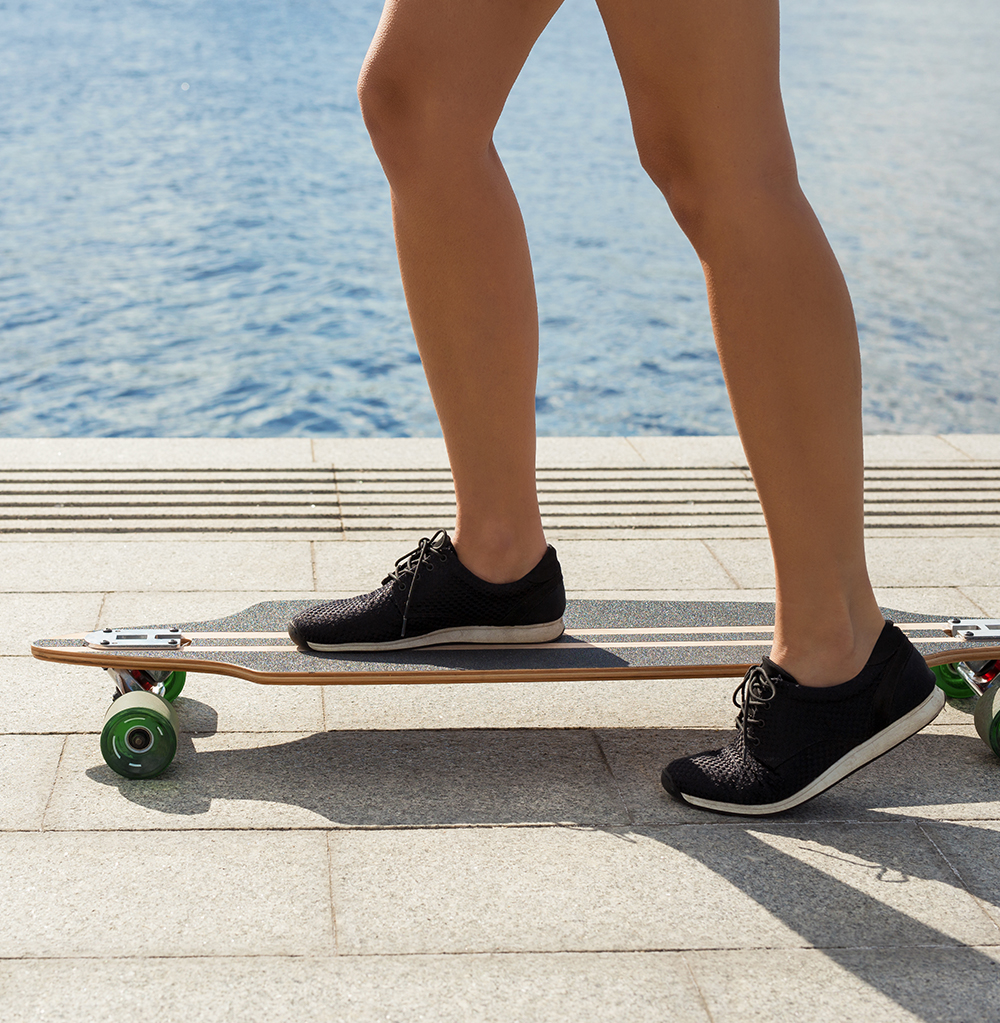
How to Stand on a Longboard
Before you can drown in the excitement of riding a longboard, you have to know the most basic aspects of longboarding first. Knowing how to stand on a longboard offers you the proper foundation when it comes to the next tricks that you will have to learn.
What is the correct way to stand on a longboard?
Here’s what you need to know about proper longboard stance:
The stance pertains to your posture on the longboard. It involves everything about how you position your whole body, especially your feet.
Stances may depend on various factors. You can use different variations depending on what you’re up to. Whether it’s carving, turning, or speeding down the hill, there’s a proper stance for that.
Some factors that determine your stance include the following:
- The direction of your shoulders and hips
- How hard you bend your knees
- How you lean your torso
- Once you identify and execute the right posture, you can start doing your desired riding techniques and styles.
Which foot goes first on a longboard?
Any board sport has two types of stances: the regular stance and the goofy stance.
The regular stance is when you stand with your left foot forward towards the direction you’re going.
The goofy stance is when you stand on the longboard with your right foot forward.
These two stances pertain to footedness, which refers to the natural dominance of your left or right foot.
Knowing this is important since it’s your dominant foot that goes in the back of the longboard to do most of the steering.
Called the pivot foot, your dominant foot will help you to have a precise riding direction.
How to find your stance
You can pick between two methods.
One, try moving or kicking something with your foot. Whichever foot you used might be the best foot to place on the back of your longboard.
Another method is by letting someone give you a slight shove. The foot you use to catch yourself is more likely your dominant one.
Note that these two methods might not be the best out there, but they sure can get you started.
If you’re not confident with either foot yet, continue trying out both goofy and regular stances. Notice how each stance goes and go for the one that feels right.
Other longboard stances you can learn
Once you find out whether you’re a goofy rider or a regular rider, you can try learning the following:
1) Cruising longboard stance
This stance lets you ride around at a slow to moderate speed. It’s perfect for when you want a relaxing ride. To do this:
- Position your feet slightly wider than your shoulders’ width.
- Your feet should have equal distance from the front and the backtracks.
- When cruising, bend your knees a little to gain balance.
- Your body should slightly rotate facing forward.
- Keep your torso neutral; don’t lean backward.
- Remember that you can lean forward or bend your knee when going over a bump or cracks to secure your balance.
2) Pushing the board stance
This stance uses your dominant foot to push as your front foot does the steering and balancing. Some riders choose the reverse type, where the front foot does the pushing.
You can try both techniques, but make sure to follow that which is the most comfortable for you.
To do the pushing the board stance, you should:
- Focus on your back foot to push.
- Squat down on your front leg.
- Bend the knee you use to push for more power and control.
- Keep your shoulders and hips facing straight forward to your longboard’s direction.
- To complete this stance, you need to lean your torso forward to follow the direction of the motion.
3) Foot breaking stance
Similar to the pushing stance, you need to achieve your balance by using your front leg. This leg should point towards your longboard’s nose, while your body should fully face forward.
To practice the foot breaking stance, you should:
- Squat down a little to let the back foot lower the ground.
- Your back foot should be parallel to your standing foot.
- Brush your foot against the ground.
- Lift your toes a little to avoid cracks.
4) Carving longboard stance
You can use this stance to revolve around, as you snake turns. It can work for you whether you’re gaining or shedding speed. This technical riding style hugely depends on finding your right stance.
To do the carving longboard stance, you should:
- Shift your weight between your toes and heels constantly.
- Your front and back foot should be perpendicular across the board.
- The knees should alternately flex and straighten before and after one turn or carve.
Remember that the goal is to lower the center of gravity and focus it into the carve. After carving, pop it up and decompress the weight on the exit. This is when the maximum energy is focused on the longboard.
Each carve starts with you rotating your ankles, hips, shoulders, and head. But you need to continuously rotate your upper body into the direction of the curve you’re targeting.
The key to securing your balance throughout is to lean forward in your successive turns.
5) Speed stance (tuck)
Commonly known as a “tuck”, speed stance means positioning your body to maximize stability and minimize wind resistance at speed.
To execute this, you need to:
- Place your foot at a 15º-30º to the deck (close to the front truck mount).
- Your back foot should be parallel to the front foot (also at a slight angle to the longboard deck).
- Position your left foot toes at about one foot away behind your front foot.
- Rest your toes close to the board edge for an easy front side turning.
- Bend your knees at about 90º.
- Place most of your body weight on your front leg.
- Lean your back knee against your front calf.
- Your hips and shoulders should fully turn towards the nose, facing downhill.
- Stretch your front hip to allow your back knee to tuck under your front knee.
- Your torso should bend forward.
- It must be almost horizontal with your chest and lean against your front thigh.
- Tuck your arms behind your back.
Takeaway
Knowing how to stand on a longboard opens the doors to more exciting longboard tricks.
If you’re a beginner, mastering how to balance or stand on a longboard starts with knowing whether you’re a goofy or a regular rider.
The key to a worthwhile ride is to master handling your board. If you haven’t found yours, check out our longboards. Tap the free-spirited rider in you and choose from our top-quality products available today.

Leave a Reply